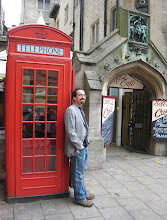Isn’t it great when you manage to get in one room a majority of all the people in the world who are interested in the same esoteric aspect of an already esoteric subfield of theoretical physics?
Keeping in mind that about half of the people who actually care about my particular pet projects within my sub-subfield are actually at NORDITA this week, I took the opportunity to declare last week to be the international week of the Gaffnian, being that most of the speakers at NORDITA were speaking about the Gaffnian in one way or another.
So for the more general physicists in the audience, I’m sure many of you are wondering what on earth a Gaffnian is. The terminology is a mathematical-phonetical-linguistic joke that I managed to get into print. The Gaffnian is a trial quantum Hall wavefunction we introduced in several years ago in this paper (In the paper, the joke is explained… sort of). For the experts it was proposed to describe the nu=2/5 quantum Hall effect, but probably instead describes a nearby critical point. This Gaffnian wavefunction has remained a bit of an enigma. It is nice because it is based on a conformal field theory – but it is not nice because it is based on a nonunitary CFT, which means that it cannot represent a state of matter with a gap (if it is a critical point it makes sense that it has no gap). However, the numerical overlap of this trial wavefunction with other wavefunctions, such as the composite fermion wavefunction, believed to represent the ground state of a gapped state of matter is about 99% even for reasonably large finite sized systems. So apparently the 1% difference between these two wavefunctions makes all the difference in the world to the physics. How this 1% changes the story is not very well understood.
A year or two after we introduced this Gaffnian wavefunction, interest boomed when Bernevig and Haldane pointed out that the Gaffnian is actually just one of the simplest of many possible trial quantum Hall wavefunctions (for general nu=k/r) that can be described as Jack polynomials (these are a family of special functions with lots of nice properties). But after a fair amount of grief it turns out that, except the previously known Read-Rezayi series, all of the Jacks suffer from the same nonunitarity problem that the Gaffnian suffers from – so they probably describe a whole set of quantum Hall critical points. The reason the Gaffnian is so interesting to study is because this is the simplest of the nonunitary Jacks and presumably understanding the physics in that case will tell us a whole lot about the more general cases.
The Gaffnian also has an appealing advantage (not shared by all Jacks) that it is the exact ground state of a particularly simple Hamiltonian. As such, quite a few exact statements about it can be made. This gives one a starting point for analysis that gives a bit of hope that we might actually be able to unravel its mysteries.
Subscribe to:
Post Comments (Atom)

2 comments:
Nice post!
1. Since non-unitarity implies gaplessness, could states described by a nonunitary CFT also correspond to 'critical phases' rather than 'critical points' (if one could prove/argue that there are no relevant directions in RG sense). If yes, are there already known examples of such phases of matter?
2. Another think I was wondering is about the reliability of overlap of wavefunctions in deducing universal properties of a phase (such as presence/absence of gap). Even outside quantum hall, I many times see people using overlap of a trial wave-fn with some other known wave-fn to make general statements about the phase described by the wave-fn. So does this Gaffnian example cautions us against such an approach? Or is this believed to be a singular example.
Hi Tarun,
(1) Yes, there are examples of critical phases. There are many floating around in the quantum-spin-systems literature -- but no examples that I can think of offhand in quantum Hall effect. We don't right now suspect the Gaffnian of being one of these critical phases as there is an obvious perturbation that likely flows to a gapped (Composite Fermion) phase. Although this is not really a rigorous statement right now, it sounds more likely (and more generic) than a critical phase.
(2) Yes, this is a big warning against using overlaps as the only measure of success! Once one starts looking for them, there are other example where overlaps can lie. (Haffnian is also critical and also has some good overlaps).
Post a Comment